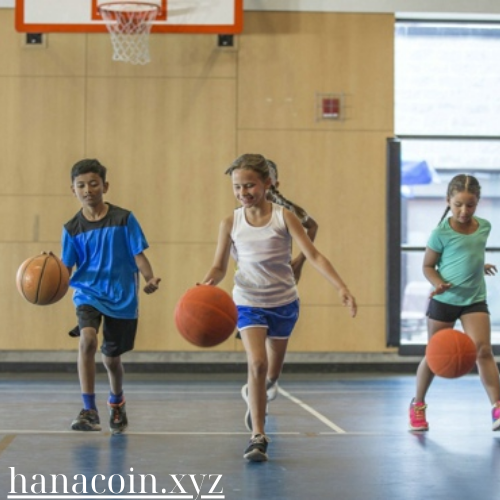Techniques & Coaching
Youth Basketball Training: Key Drills and Techniques for Young Players
Training young basketball players involves more than just teaching them the fundamentals; it’s about building their confidence, improving their skills, and fostering a love for the game. Here’s a guide to key drills and techniques tailored for young players to help them develop their basketball skills effectively.
1. Fundamental Drills
a. Dribbling Drills
- Stationary Dribbling: Have players practice dribbling while standing in place. Focus on control and using both hands. Start with basic dribbles and then progress to more complex moves like crossover dribbles.
- Cone Dribbling: Set up cones in a line or zigzag pattern and have players dribble through them. This drill improves ball-handling skills and agility.
- Dribble Knockout: In a designated area, have players dribble while trying to knock each other’s balls out of bounds. This drill helps players practice dribbling under pressure.
b. Passing Drills
- Partner Passing: Players pair up and practice different types of passes—chest, bounce, and overhead passes. Emphasize accuracy and proper technique.
- Passing in Motion: Have players practice passing while moving. Incorporate various movements like cutting and running to simulate game situations.
- Passing Relay: Set up a relay race where players pass the ball to each other to complete the course. This drill helps improve passing speed and teamwork.
c. Shooting Drills
- Form Shooting: Players practice shooting close to the basket, focusing on proper form and technique. Gradually increase the distance as their shooting improves.
- Spot Shooting: Have players shoot from various spots on the court, such as the free-throw line, corners, and wings. This drill helps improve shooting consistency from different angles.
- Spot Shooting Challenge: Create a shooting game where players earn points for making shots from different spots. This adds a competitive element and keeps training engaging.
d. Defensive Drills
- Defensive Stance: Teach players the fundamentals of a proper defensive stance, including foot positioning and balance.
- Closeout Drills: Practice closing out on shooters by sprinting towards them and getting into a defensive position. Emphasize maintaining balance and contesting shots.
- Defensive Slides: Players practice sliding side-to-side in a defensive stance. This drill improves lateral quickness and defensive movement.
2. Skill-Building Techniques
a. Ball Handling
- Two-Ball Dribbling: Have players dribble two basketballs simultaneously. This technique improves hand coordination and ball-handling skills.
- Figure Eight Dribbling: Players dribble the ball in a figure-eight pattern around their legs. This drill enhances control and dexterity.
b. Shooting Technique
- BEEF Method: Teach players the BEEF method for shooting—Balance, Elbow, Eyes, and Follow-through. Focus on each element to improve shooting form.
- Spot Shooting with Defense: Incorporate a defender during shooting drills to simulate game conditions and help players develop shooting accuracy under pressure.
c. Passing Accuracy
- Target Passing: Set up targets on the wall or on the floor and have players practice hitting these targets with different passes. This drill improves passing precision.
- Passing Under Pressure: Add defenders to the passing drills to simulate game situations and improve decision-making under pressure.
3. Game Situations and Scrimmages
a. Mini-Games
- 1-on-1 Battles: Players engage in one-on-one matches to work on offensive and defensive skills. This helps improve individual play and decision-making.
- 3-on-3 Games: Organize small-sided games to focus on teamwork, spacing, and movement. This format allows players to practice skills in a more game-like setting.
b. Situational Drills
- End-of-Game Scenarios: Practice game-ending situations, such as inbound plays and last-second shots. This helps players learn how to handle pressure and execute in critical moments.
- Fast Break Drills: Simulate fast breaks and transition plays to develop players’ speed and decision-making in fast-paced situations.
4. Fitness and Conditioning
a. Agility Drills
- Ladder Drills: Use agility ladders to improve footwork and speed. Incorporate various patterns like high knees and lateral steps.
- Shuttle Runs: Have players perform shuttle runs to build endurance and quickness. Set up cones at different distances and have players run back and forth.
b. Strength Training
- Bodyweight Exercises: Introduce bodyweight exercises such as squats, lunges, and push-ups to build strength. Ensure exercises are age-appropriate and focus on proper form.
c. Flexibility and Stretching
- Dynamic Stretching: Incorporate dynamic stretching routines, such as leg swings and arm circles, into warm-ups to improve flexibility and reduce the risk of injury.
- Cool-Down Stretches: End practices with static stretching to help players recover and maintain flexibility.
5. Encouraging Positive Attitudes
a. Motivation and Support
- Positive Reinforcement: Use positive reinforcement to encourage players and build their confidence. Praise effort and improvement, not just outcomes.
- Setting Goals: Help players set individual and team goals. Regularly review progress and celebrate achievements to keep players motivated.
b. Enjoyment and Engagement
- Fun Activities: Incorporate fun and engaging activities into practice to keep players excited about basketball. Use games and challenges to make training enjoyable.
- Team Building: Foster a sense of teamwork and camaraderie through team-building exercises and group activities.
Conclusion
Effective youth basketball training focuses on developing fundamental skills, enhancing techniques, and creating engaging and positive experiences for young players. By incorporating these key drills and strategies into your coaching, you can help young athletes improve their skills, build confidence, and enjoy the game of basketball.

